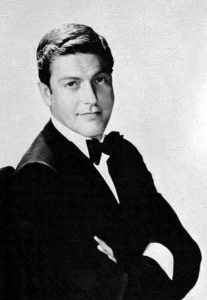Accent On Accents: The Curse of Dick Van Dyke
When we lived in England, we found that it was commonly accepted among most Brits that the hands-down worst fake British accent ever was affected by Dick Van Dyke in the film Mary Poppins. Considering that the film is now decades old and still has the power to haunt, you have to think the trauma was pretty severe. So what were Dick’s big mistakes? Two very basic ones that a lot of people make when imitating accents: Overdo and Disconnect.
Overdo is pretty easy to understand. Most people recognize bad actors, because they look like they’re acting. (Good actors make you forget you’re watching an actor, because it seems so effortlessly genuine.) Bad accents are much the same. The actor will have a couple of signature sounds, like dropping initial ‘Hs’ and rhyming <day> with <eye> in the case of a Cockney accent, and they will flog them for all they are worth. Trouble is, people vary their vowel sounds based on how much stress the vowel receives. (And they vary their consonant sounds based on a number of factors, but that’s another article.) Try saying “mayday” and you’ll probably find your long-A sound is lighter on either syllable than it would be if you just said “day,” and oodles lighter than if you belted “day” like the last line of “Tomorrow” from Annie. A good fake accent varies vowel sounds just as you would in your natural speech. For contrast, listen to Audrey Hepburn in My Fair Lady. The Cockney accent was just as fake for the Belgian-born actress, who didn’t move to Britain until she was nineteen, but it seems much more natural. (People in the know would never believe she had been born within the sound of Bow bells, but real Cockney experts are the serious minority.)
Disconnect often accompanies Overdo. Actors have often drilled a few words or phrases, and when those are out, they think they’ve done their job and let the rest slide. Listen how often Dick will follow a hugely overdone long-A “eye” sound with a normal American long-A shortly thereafter. And all the little in-between words that make up most of our sentences aren’t worked on at all, so you get sentences like, “<accent> is in the <accent> with the <accent>.” Learning how things get strung together is the real key to selling an accent.
So what’s an aspiring Cockney to do? Hitting YouTube is a good start. And I’m not talking about links by Americans entitled, “How to Speak with a Cockney Accent,” I’m talking about actual Cockneys (there are plenty of them). Just listen. If you really want to learn, type yourself a script of what the person is saying and read along. Look at what they do with stressed and unstressed vowels. Pay attention to the little words. Pay special attention to what happens when two vowel sounds happen together (like “Diana_and” or “saw_a”). Read the script in your natural accent and then listen again. Try imitating syllables, then words, then phrases. It takes practice, but you’ll soon find you can do a good enough job to fool most Americans, and you definitely won’t sound like a Dick.

